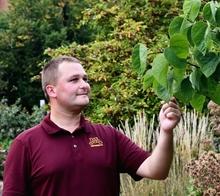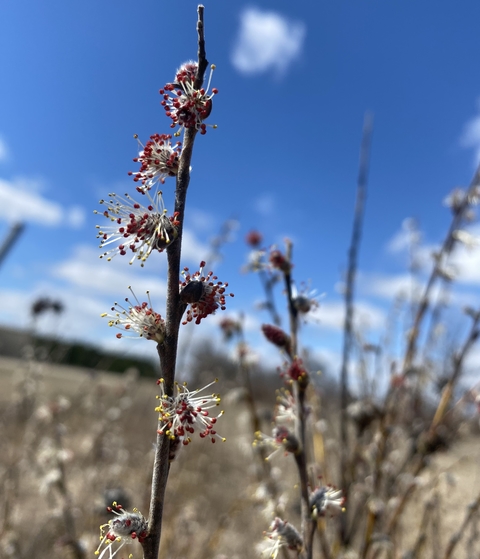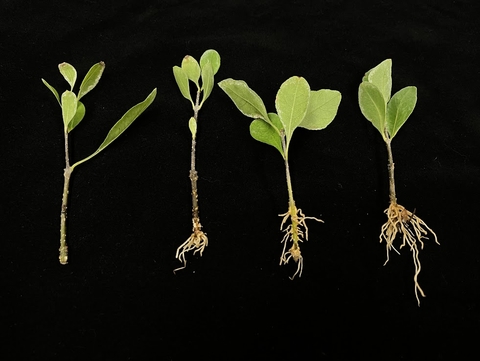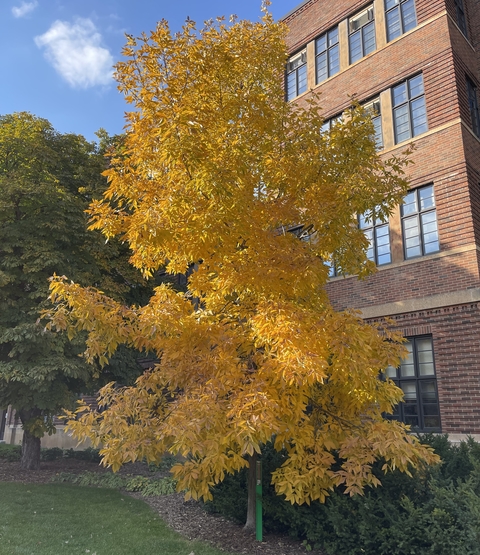Everyone can appreciate the flowers and fruit of a crabapple tree or the year-long beauty of a juniper. But Brandon Miller, a University of Minnesota Extension specialist in horticulture science, is engaging applied plant science graduate students in his search for other options that show potential for Minnesota landscapes.
Here are a few of the species he and his team are studying:
Prairie willow (Salix humilis)
Prairie willow is native to Minnesota and has many appealing traits. Its small size (3 m. tall or less) and attractive yellow-green branchlets fit in smaller home gardens. Early spring blooms provide food for pollinators.
“It seems very adaptable to disturbed or degraded conditions, which shows that it could be a good species for harsher urban areas,” says Hazel Schrader, a graduate student working with Miller. Plants in urban areas contend with more runoff, pollutants and heat. Prairie willow is a promising choice for rain gardens.
Most willows are easy to propagate, but not prairie willow. Schrader’s research indicates that taking cuttings from very young plants may improve propagation success.
Desert olive (Forestiera pubescens)
Miller learned that a couple of these southwestern U.S. native trees have been growing at the University of Minnesota Landscape Arboretum for 15 years yet were not the focus of research. Desert olive is versatile enough to be used in hedges or as a standalone. Its tolerance of both flooding and drought could make it a good fit for Minnesota’s climate into the future.
Alyssa Headley, another graduate student, takes cuttings at different times of the year, grows them in various materials and applies different levels of the plant growth hormone auxin. “The goal is to make a well-rounded propagation protocol,” she says.
Hickories
Hickories are one of Miller’s favorite novel crops. He has fond memories of a piece of family land in northern Illinois that is dominated by shagbark hickory that fueled his early interest in trees. Much of his graduate research involved hickories and how to propagate and grow this challenging tree more effectively.
Miller is quick to sing the praises of hickories: they’re a beautiful ornamental tree, produce edible nuts and timber, provide valuable habitat for wildlife, live long, and are susceptible to relatively few diseases.
Minnesota has two native hickories. Bitternut hickory is found throughout the state, while shagbark hickory grows mostly in southeastern Minnesota.
Find advice on selecting and caring for trees and shrubs for your home landscape on Extension's Trees and shrubs web page.
Permission is granted to news media to republish our news articles with credit to University of Minnesota Extension. Images also may be republished; please check for specific photographer credits or limited use restrictions in the photo title.





